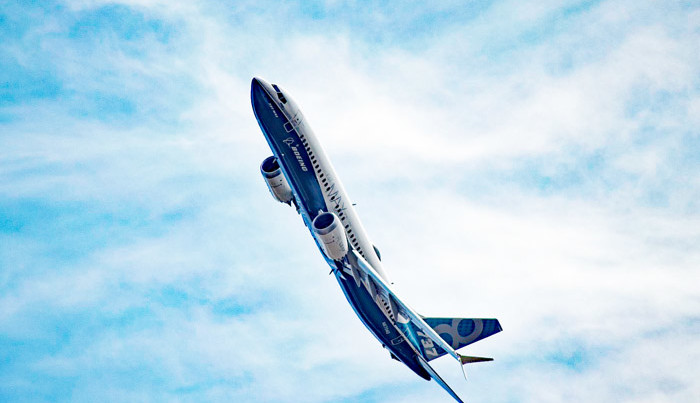Boeing to release software upgrade for the 737 MAX 8
March 26, 2019
on
on

The 737 family of jets have been hugely successful since their introduction back in 1967 but the tragic loss of two of the latest MAX 8 variants in recent months has cast a long shadow and the apparent similarity of the sequence of events leading up to the two incidents has led Boeing to issue a worldwide temporary flight ban on the model. The crash of the Lion Air aircraft last October and the current Ethiopian Airline aircraft incident seem to have similarities, as the Minister of Transport of Ethiopia announced recently after initial examination of black box information.
The air-accident investigations are still ongoing and we will not know the truth until their final reports are published but some industry insiders have speculated that recent changes to the 737 design could hold the key. The MAX 8 version of the 737 uses modern fuel-efficient CFM Leap engines which are physically bigger than the original power plants. They need to be mounted higher up and further forward on the airframe, which originally created a handling problem when the aircraft was flying at high angles of attack, particularly at low speeds when landing and taking off.
The surprising thing is that all safety critical applications will generally employ three identical systems and perform a majority vote on the outputs so that a bad signal from any single system will be ignored. Preliminary information from the event in October last year suggests that it would require faulty information from just one Angle of Attack (AOA) sensor for the MACS system to issue continuous nose-down ‘corrections’. The crew can easily disable the system by switching both STAB-TRIM cutout switches to their CUTOUT positions. It emerged in the last few days that investigators of the October crash were able to determine from cockpit recordings that the crew found themselves in a situation their training had not prepared them for and they were unable to disengage and avert disaster.
The CEO of Boeing has confirmed that the company is hard at work on a software upgrade for this particular aircraft type which they plan to have completed within ten days and they will also be revising the associated pilot training program.
The air-accident investigations are still ongoing and we will not know the truth until their final reports are published but some industry insiders have speculated that recent changes to the 737 design could hold the key. The MAX 8 version of the 737 uses modern fuel-efficient CFM Leap engines which are physically bigger than the original power plants. They need to be mounted higher up and further forward on the airframe, which originally created a handling problem when the aircraft was flying at high angles of attack, particularly at low speeds when landing and taking off.
MCAS
Boeing solved the altered handling characteristics by introducing the MCAS (Maneuvering Characteristics Augmentation System), which uses sensors to measure the aircraft’s angle of attack and issues down-stabilizer control inputs when the system senses that a stall condition is imminent.The surprising thing is that all safety critical applications will generally employ three identical systems and perform a majority vote on the outputs so that a bad signal from any single system will be ignored. Preliminary information from the event in October last year suggests that it would require faulty information from just one Angle of Attack (AOA) sensor for the MACS system to issue continuous nose-down ‘corrections’. The crew can easily disable the system by switching both STAB-TRIM cutout switches to their CUTOUT positions. It emerged in the last few days that investigators of the October crash were able to determine from cockpit recordings that the crew found themselves in a situation their training had not prepared them for and they were unable to disengage and avert disaster.
The CEO of Boeing has confirmed that the company is hard at work on a software upgrade for this particular aircraft type which they plan to have completed within ten days and they will also be revising the associated pilot training program.
Read full article
Hide full article


Discussion (10 comments)